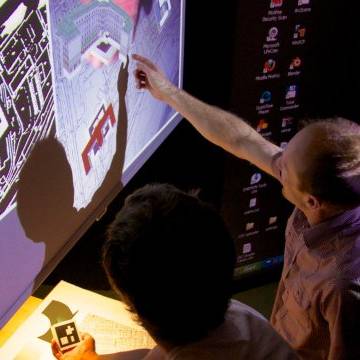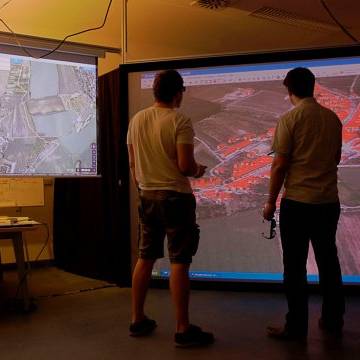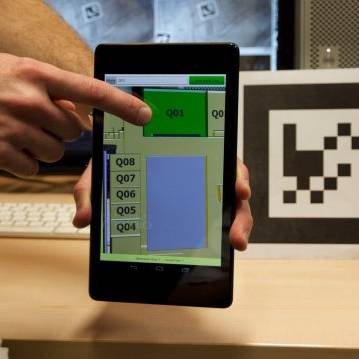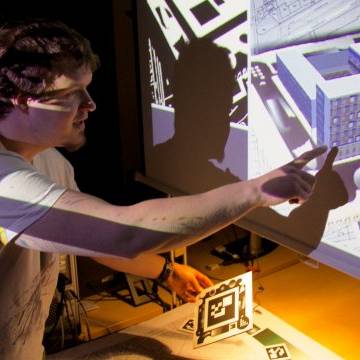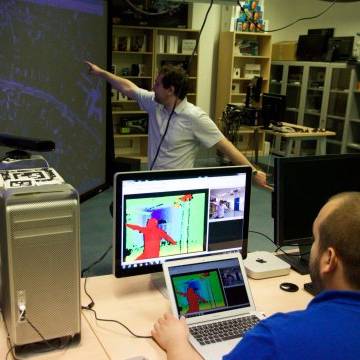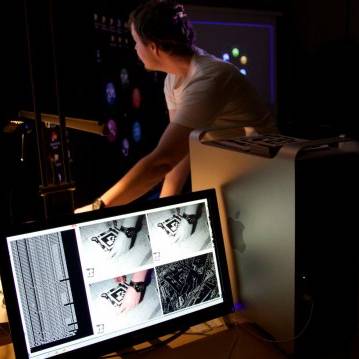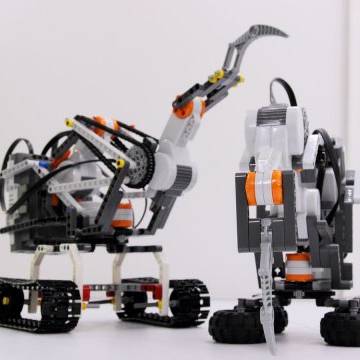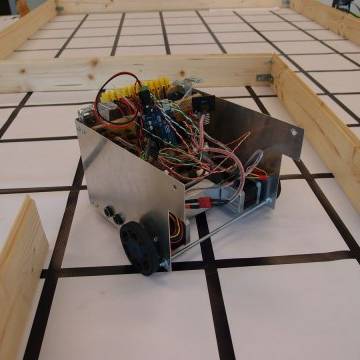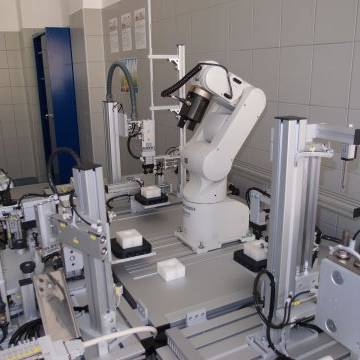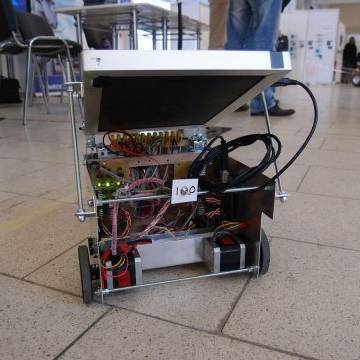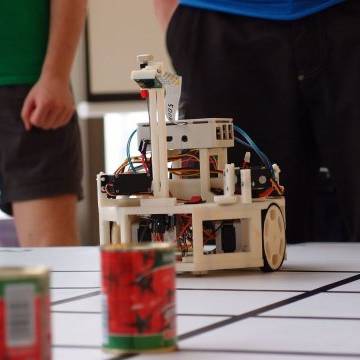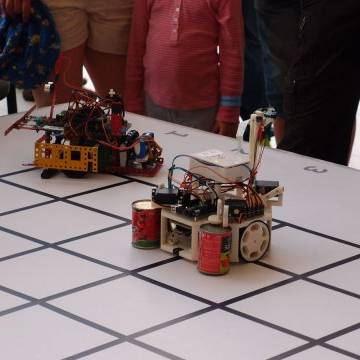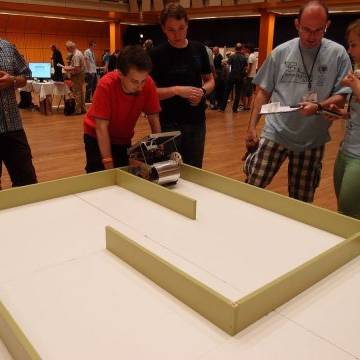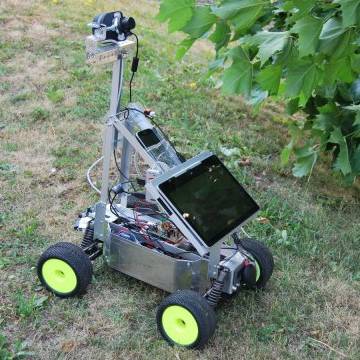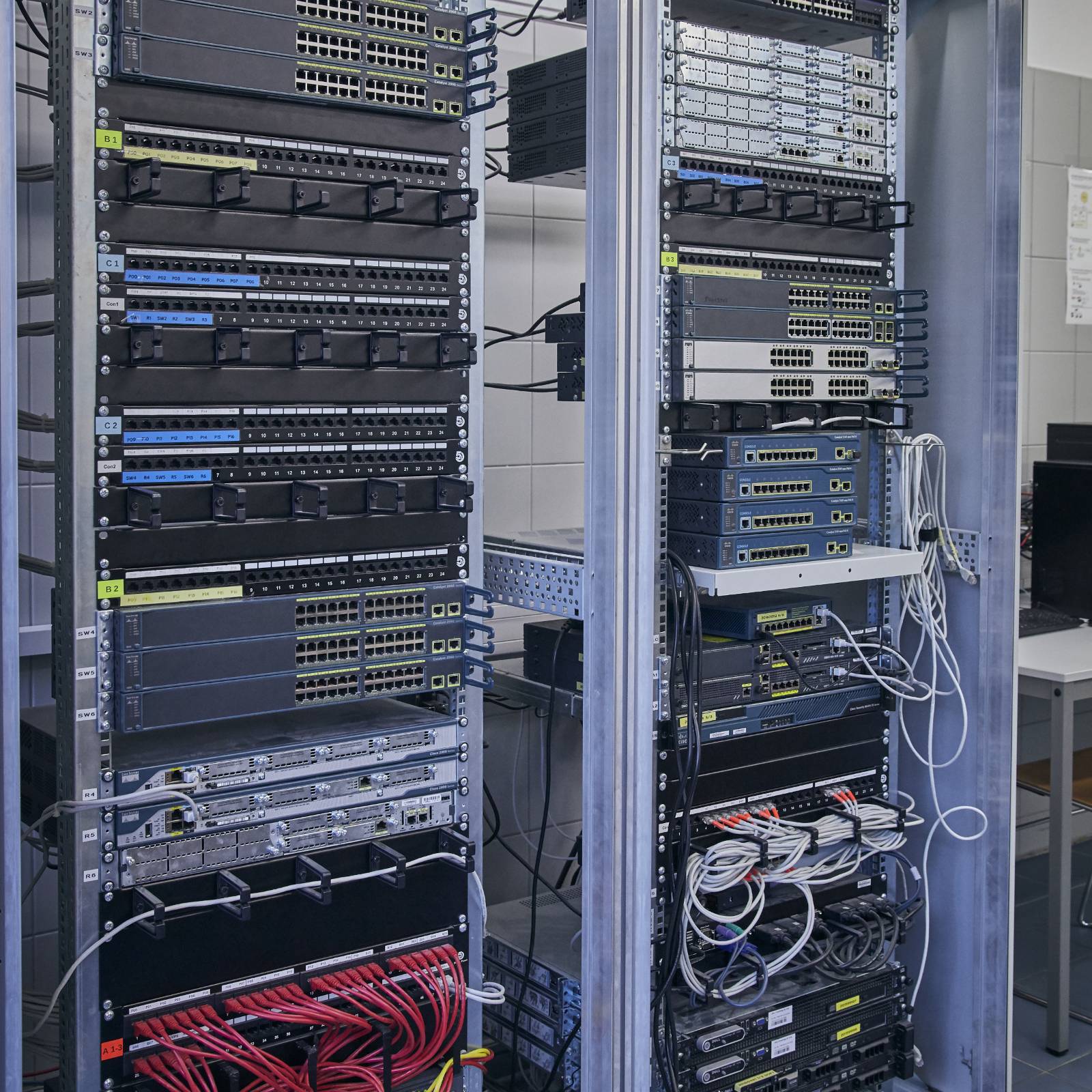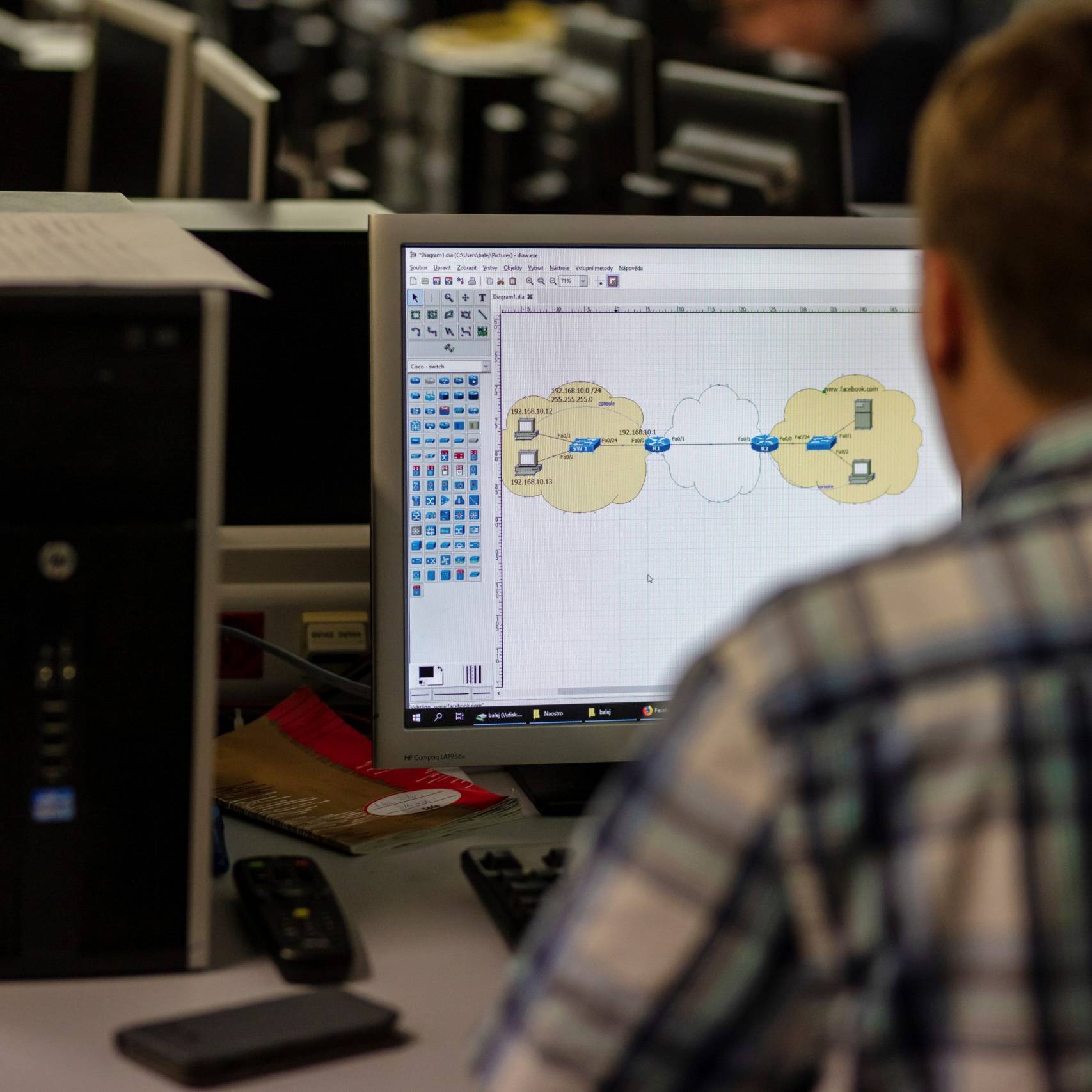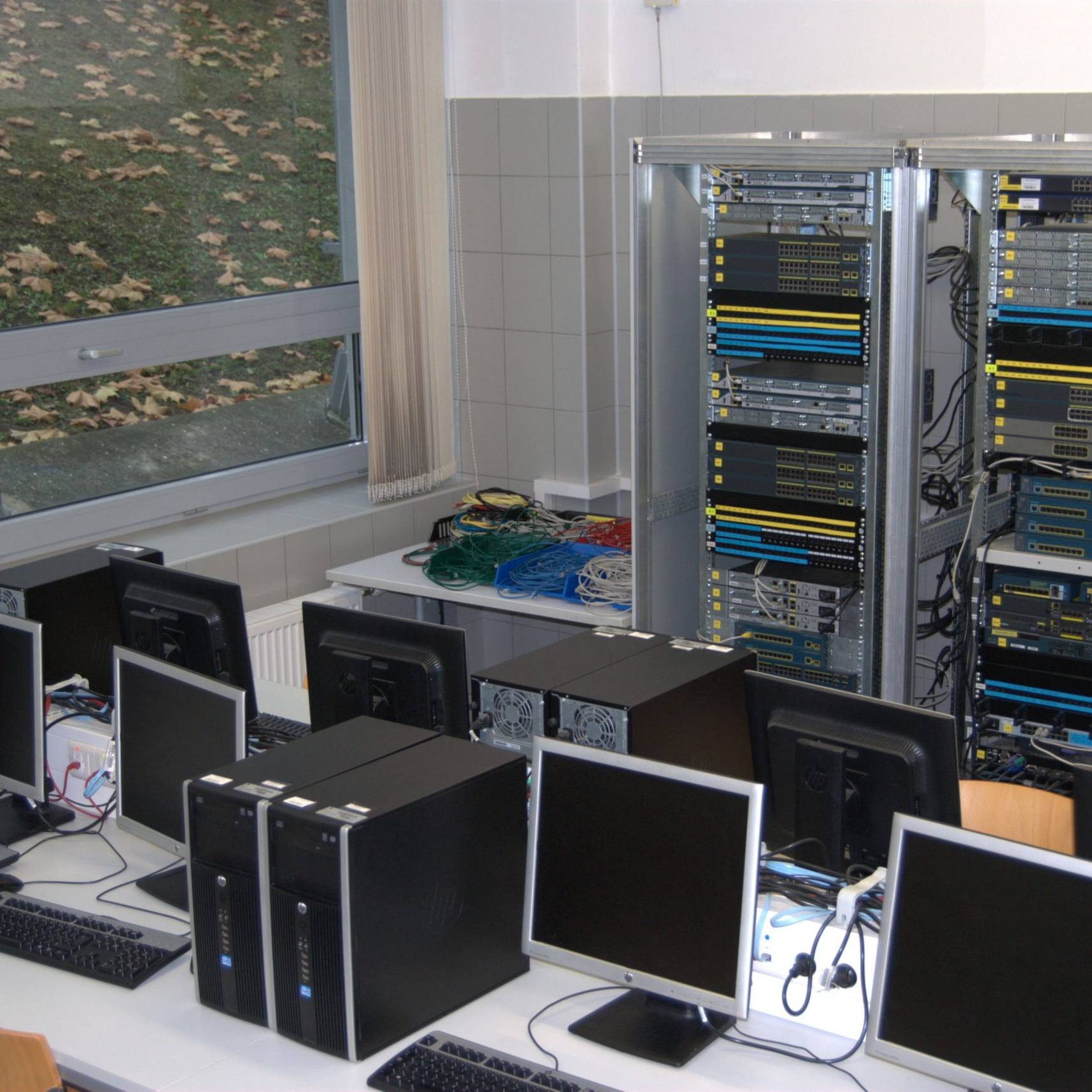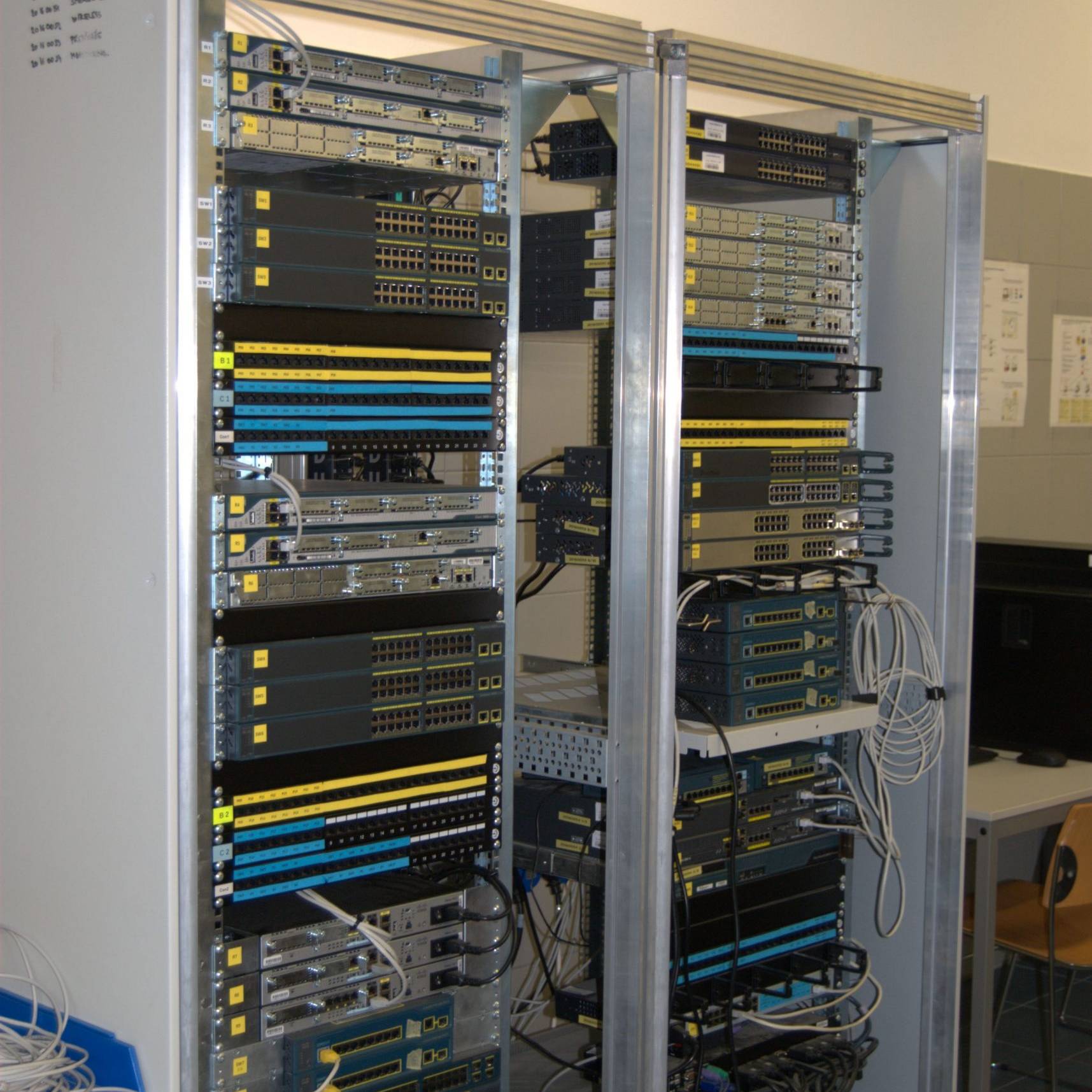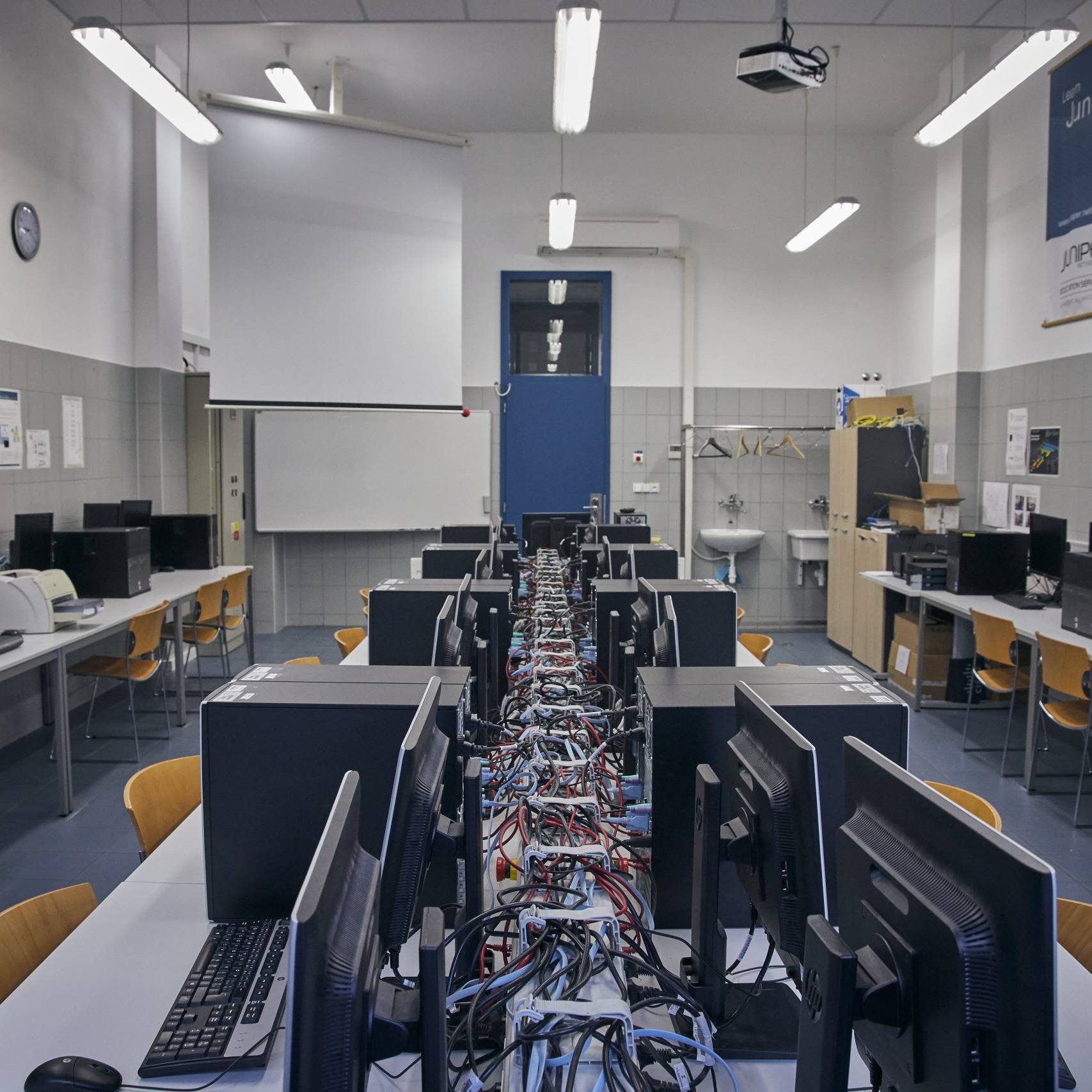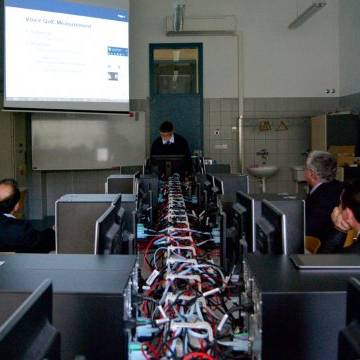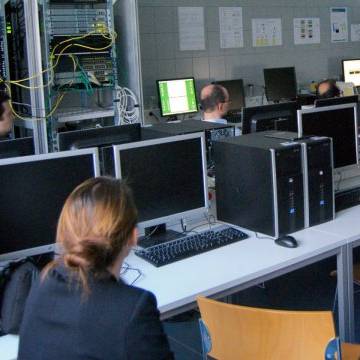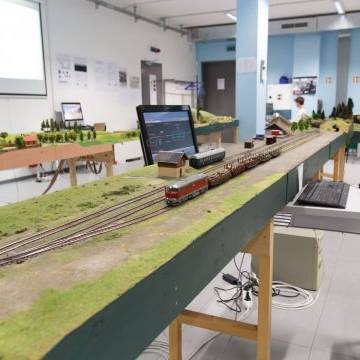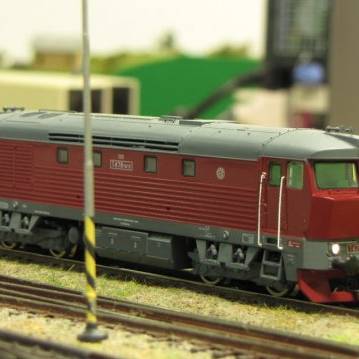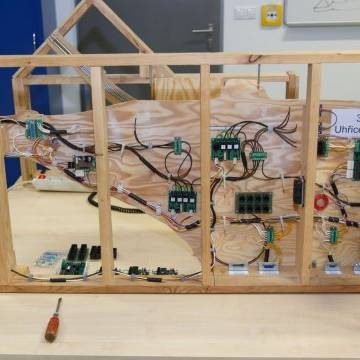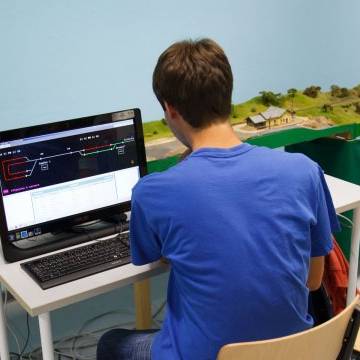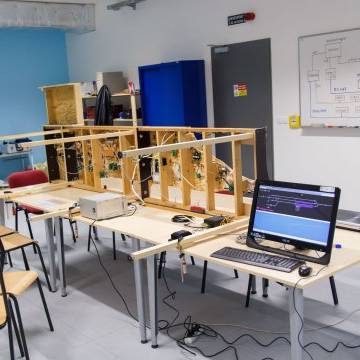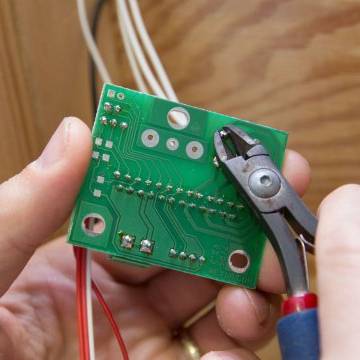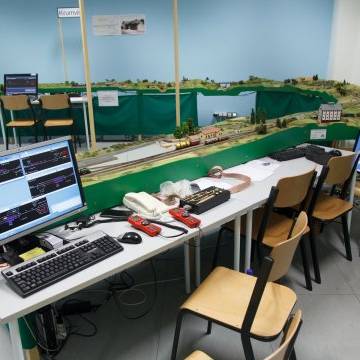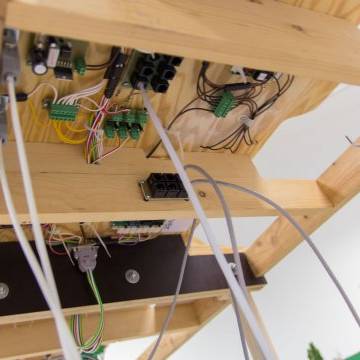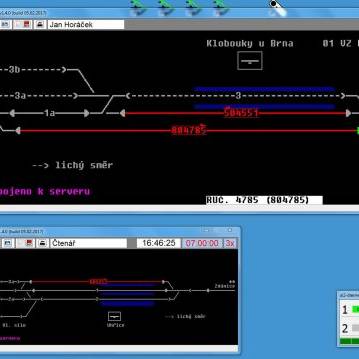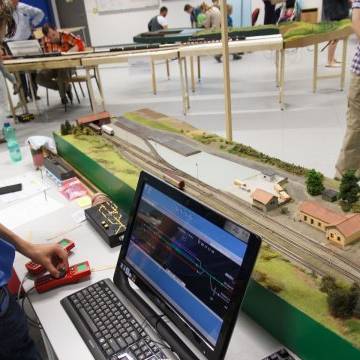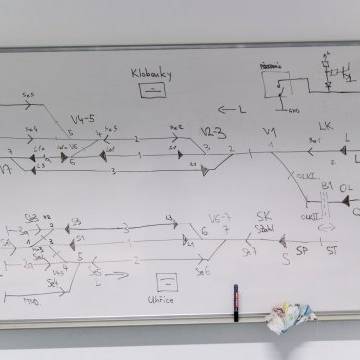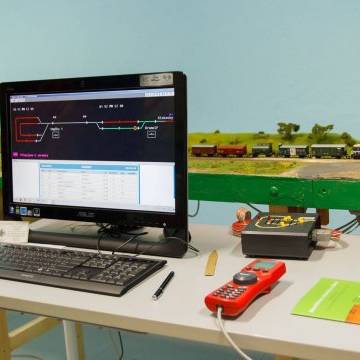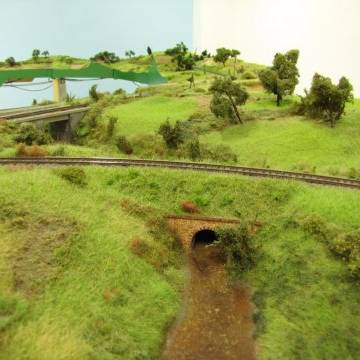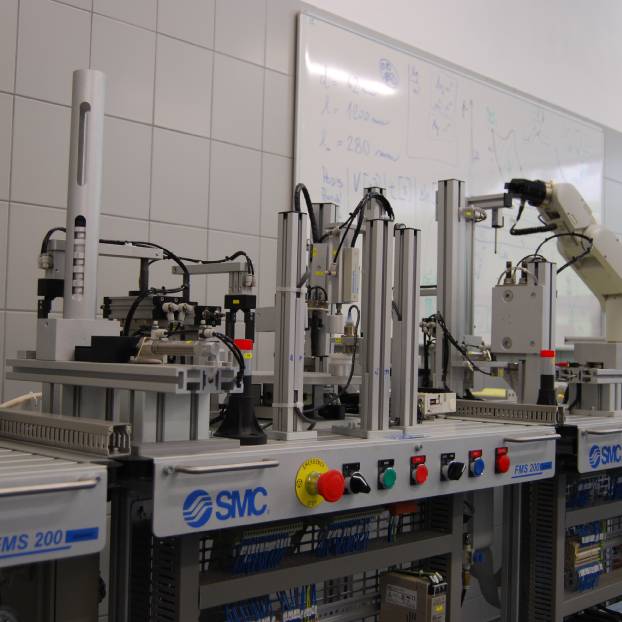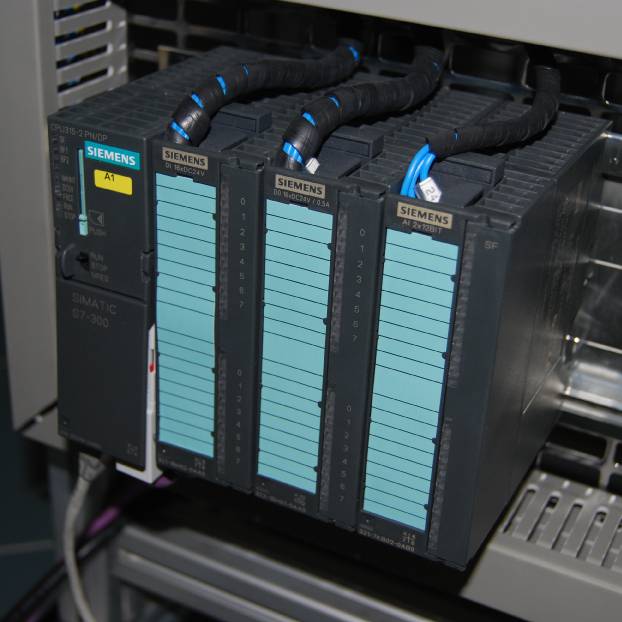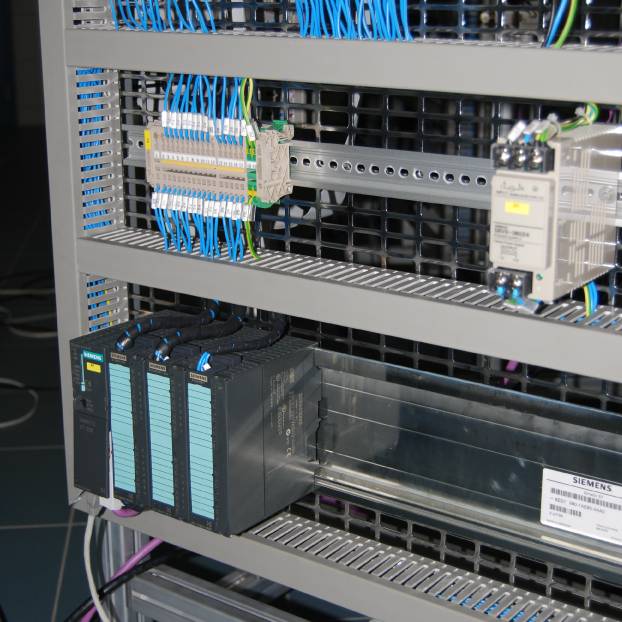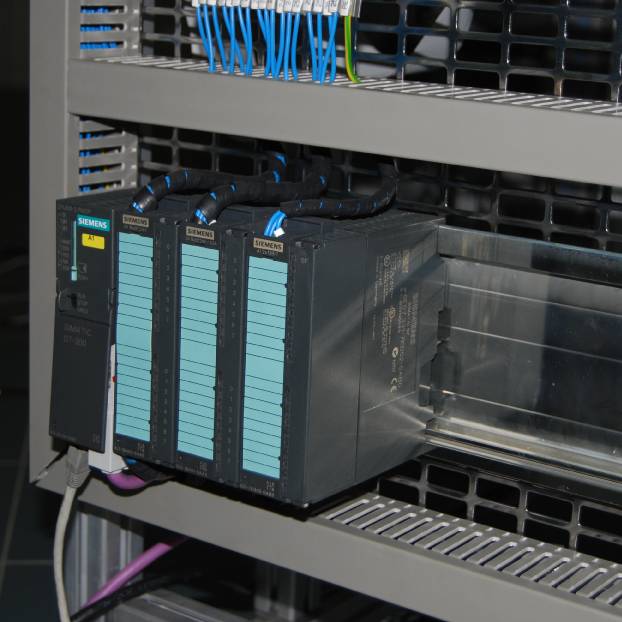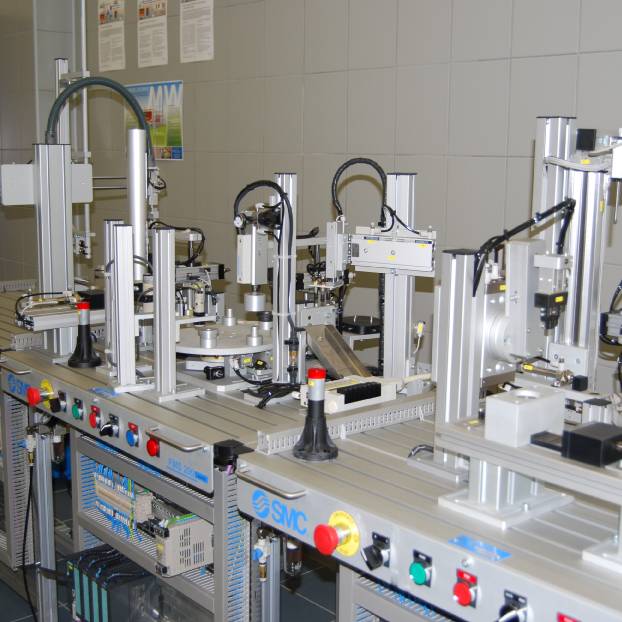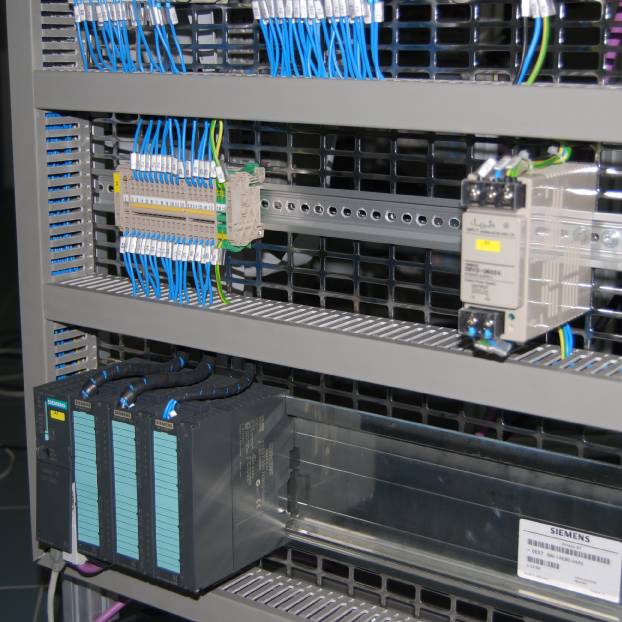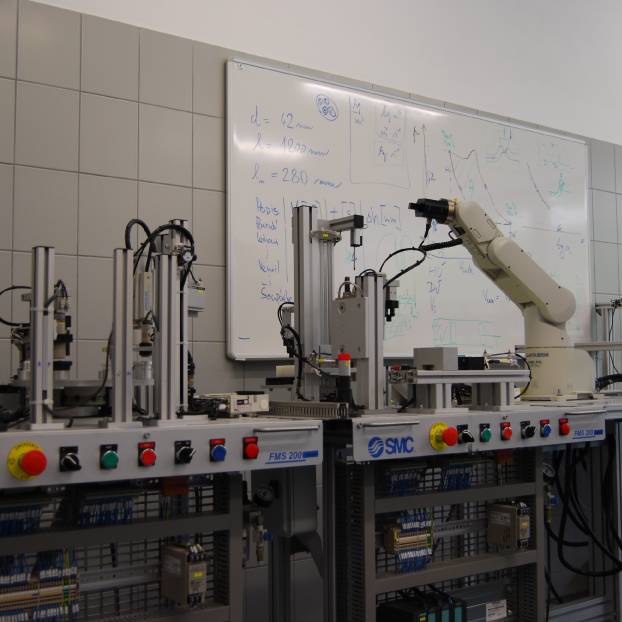Specialized Laboratories
Spatial Hub
Spatial Hub is currently used mainly for teaching and solving projects in the field of image processing (virtual and augmented reality, gesture detection, etc.), and mobile applications (location-based services, GIS).
Spatial Hub (formerly Virtual Reality Lab) has been in operation since 2006. In the beginning, it was equipped with large-scale 3D rear projection (Infitec technology), two conventional projections, electromagnetic motion trackers (Flock of Birds by Ascension + 3D mouse by Wanda), and graphic stations. It was mainly used for data modeling and visualization.
Over the years, the focus of Spatial Hub has shifted towards computer vision and mobile applications. Therefore, it has been equipped with AR and VR helmets, over a hundred of iOS and Android tablets, mobile phones, smart watches, smart speakers and many IoT devices. Spatial Hub is currently experimenting with new types of user interfaces, mainly Augmented Reality and location-based services. Research on user interfaces is also closely related to the field of Geographic Information Systems (natural objects detection).
Spatial Hub accessibility
All staff members and students have access to Spatial Hub for research, projects, and theses writing in this area.
For further information about Spatial Hub, please visit the Spatial Hub website at https://spatialhub.mendelu.cz.
Intelligent Systems Lab
Intelligent Systems Lab
The Intelligent Systems Lab is used for theoretical and practical teaching in the fields of artificial intelligence, robotics and automation, and control of technological processes. In addition to regular teaching, it provides support for students‘ thesis work, mainly in the following areas:
- Modeling and visualization (SolidWorks, AutoCAD)
- Technical calculations and simulations (MATLAB, Simulink)
- Development of measurement and control applications (LabView)
- Development of systems for industrial process automation (Control Web)
- Programming of industrial robots (Mitsubishi, Katana)
- Development of software for programmable automata (Siemens Simatic, etc.)
- 3D printing and rapid prototyping
- Printed circuit board manufacturing
The laboratory is also used for development and research in the field of stationary and mobile robotics, automation control, and solving optimization problems using soft computing. For example, the following projects were solved in the lab:
Detection of objects on the conveyor belt, Implementation of remote control of the KatHD300s manipulator, Contactless control of the manipulator”s effector position by hand movement, Chess playing automaton, Development of an autonomous mobile robot K3, etc.
The laboratory is also used by a team consisting of students and staff of the Department of Informatics whose main focus is the development of mobile robots. The Robotic Team uses the lab facilities for testing their prototypes and for preparing for robotic competitions (Eurobot, Robotour, Robotic Day, etc.). In addition, the laboratory is also used for training secondary school students and for various occasions of science popularization (Night of Scientists, Open Days, etc.).
Lab Accessibility
The laboratory is available to all staff members and students of computer science. Anyone interested can use the Katana KatHD300s and Mitsubishi MELFA RV2-AJ robotic arms including adjustable lighting of the working area, Basler industrial cameras, 3D printer, control cards from National Instruments and Moravské přístroje, Siemens Simatic programmable automata, industrial PCs, development kits and control boards (FEZ board, Raspberry Pi, Arduino, etc. ), mobile robots of our own design and RC models, stepper and DC drives, a wide variety of sensors, laboratory power supplies, oscilloscopes and multimeters, breadboards, and much more. Of course, powerful workstations and graphic workstations with Windows and Linux operating systems are available.
Modeling Workroom
The modeling workroom supports rapid prototyping applied in research and development at the Department of Informatics. In particular, it provides facilities for finishing technological elements printed on a 3D printer, as well as enabling the production of completely new components. Furthermore, the workroom is used to assemble these components into functional units. In addition, it appropriately complements the facilities of the other laboratories with the possibility of fine machining of materials and the development of prototypes of not only robotic systems.
The following machines, among others, can be found in the workroom:
- PD400 lathe with accessories
- micro mill FF 230 with accessories
- micro mill FF 500/CNC
- micro bandsaw MBS 240/E
Network Lab
The lab provides technology facilities for teaching, projects, and theses in the areas of routing, switching, network security, wireless networks, VoIP, and virtualization. In addition, the lab offers industrial network training opportunities.
Courses and Theses
The bachelor’s degree programs include courses that equip students with the basic knowledge of communication technologies. Bachelor theses, projects, master’s degree courses, and diploma theses enable students to become experts in the field. Emphasis is put on solving practical problems related to network devices that arise in everyday practice. Students have full access to the facilities of the lab. Potentially risky experiments cannot influence the production systems of the university network or the Internet due to the special testing environment.
Network Academies
Certified instructors of the Department of Informatics coordinate and teach the following industrial network academies:
- Cisco Networking Academy (taught in a separate lab)
- Juniper Networks Academic Alliance
- MikroTik Academy
Projects
In addition to the courses in regular study programs, students can participate in project and experimental activities such as conducting laboratory network penetration tests, measuring data center availability in case of outages, QoS-based quality of service assurance (in collaboration with Sevana Oü), WiFi network coverage analysis, etc.
Available Equipment and Technologies
- Network elements – Cisco Systems, Juniper Networks, MikroTik
- Operating systems – Linux, Microsoft Windows
- Virtualization – VMware, Citrix, Microsoft HyperV
Railway Traffic Control Lab
The laboratory was established in 2015 in cooperation between FBE MENDELU and Railways Modeling Club Brno I. This cooperation enables the university to use the extensive knowledge and results of the long-term technologies development of the Club,
The long-term intention of the Club’s activities is to model sections of real lines – buildings, signaling equipment, and station layouts. This ables modeling real operation as well as preserving the historical appearance of lines that no longer exist or are largely out of service.
University-related activities:
- final theses of students – participation in projects, solving operational problems;
- optional course Railway Traffic Control – laboratory exercises;
- laboratory exercises in other courses, school by play (Programming techniques, Algorithmization);
- MENDELU students‘ hobbies – landscape construction, rail control.
Activities for the Railway Modeling Club:
- modeling activities – construction of railway modules, buildings, and vehicles when the clubroom is closed in winter;
- technology development – electronics, rail control software.
Joint events:
- exhibitions – spring exhibition, Night of Scientists;
- open days, excursions – for prospective students, for the public, for schools.
Projects, bachelor, and master theses
- Operation automation – operation according to a cyclic schedule without the need for manual operation of the track and without automatic train diversion
- Recognition of objects in an image scanned by a vehicle – recognition of known traffic signs and vehicle reactions (speed change, sound signal) and recognition of obstacles on the track
- Vehicle control using a mobile device – controlling a vehicle from a tablet or mobile phone, possibilities of communication with the dispatcher
- Station announcements – the creation of announcement segments, track technology, the composition of announcements, integration into the control software
- Design of model lines using geographic information technologies – based on selected locations, real geographic data is used for landscape design, after transformation to module dimensions and to standardized module elements (track alignment) creation of the basis for the module landscape
- Alternative track electronics – using alternative elements for vehicle motion scanning and controlling electronic equipment (PLC)
- Automatic vehicle calibration – setting vehicle stopping distances for specified track speeds by sensing vehicle movement with IR sensors
- Play School – making the track control server available via an internet service – simplified control using basic commands. By composing the commands into an appropriate procedure (algorithmization), the desired track operation can be performed
Further information found at https://www.kmz-brno.cz/
Information Systems and Process Modelling Lab
The laboratory equipped with high-performance computers is focused on teaching business information systems and modeling business processes and information flows in companies.
Students will be introduced to the following types of software:
- Microsoft Dynamics Navision, Helios, QI, and Vema enterprise information systems. These are the ERP systems that are most frequently used in today’s mid-sized and smaller companies. The QI system, which also includes a development module for the creation of system extensions, is intended exclusively for IT-related study programs. The Helios system offers connections to public administration registers and modules for demonstrating cooperation with financial institutions. The lab also contains the APS Marketing management information system for supporting decision-making in the field of customer relationships.
- CASE systems supporting process and information systems modeling – Enterprise Architect, Visual Paradigm, and ARIS, which is one of the largest and most comprehensive systems of this type.
- Project management software MS Project and Primavera; for teaching multi-project management we also use one of the modules of the QI system.
The laboratory is used not only for the teaching, but also for the elaboration of the seminar, bachelor, and diploma theses. Students have access to the lab and can get acquainted with the given software and its functionalities.
Laboratory of pneumatic systems
The pneumatic systems laboratory is used for practical teaching of students in the Open Informatics study program. The study subjects are focused on industrial automation and pneumatics. One of these subjects is Technological Process Management, which is part of the Embedded Systems specialization (B.Sc. specialization). Students could practice with PLC (programmable automata) systems from B&R and Siemens, and use the Pneutrainer teaching system (automated assembly line) from SMC, including a training station for pneumatic elements. These teaching sets (teaching workplaces) contain basic pneumatic elements that simulate common applications in industrial automation in connection with PLC systems.
In the laboratory, students are supposed to learn how to code PLCs and design simple automation tasks. Teaching in the laboratory provides them with the basic practical skills needed to work with technological processes in an industrial environment.

